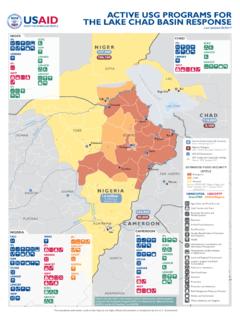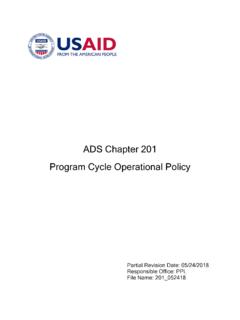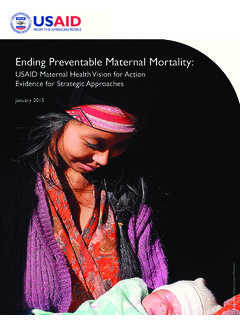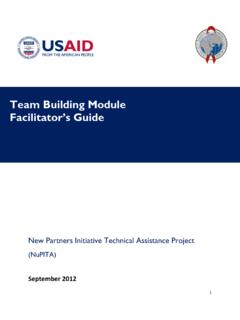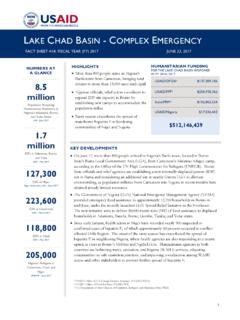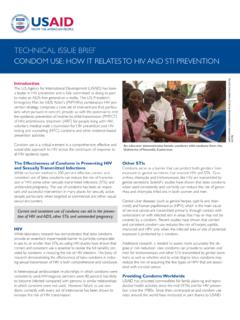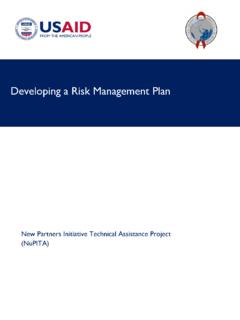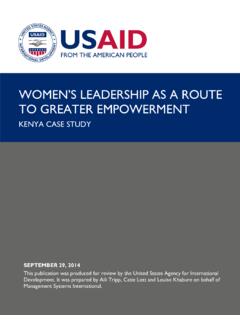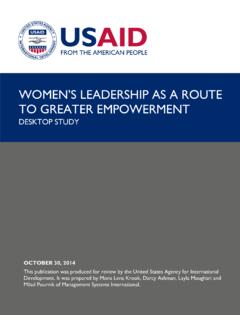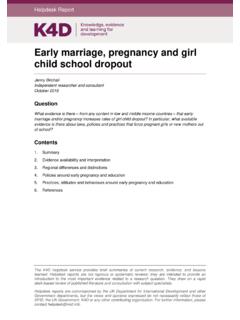Transcription of Gender and extreme poverty
1 1 September 2015 Gender and extreme poverty Getting to Zero: A USAID discussion series Since 1990, over 900 million people have seen their consumption rise above $ per If this trend continues, extreme poverty could be eradicated within the next two decades. However, this projection depends on ensuring inclusive economic growth that reaches typically excluded populations, and women in particular. A nuanced understanding of the role Gender plays in efforts to end extreme poverty can lead to better results; for women and girls themselves, their families, and their communities.
2 When women s productivity in areas such as agriculture increases, the benefits are amplified across families and generations. Evidence from a range of countries shows that relative to men, women spend more of the income they control in ways that benefit their children, improving nutrition, health and educational Research also shows that an increase in the female share of labor force participation results in faster economic growth,3 which can help countries move out of extreme poverty . While many data gaps remain, we know that women are vulnerable to extreme poverty because they face greater burdens of unpaid work,4 have fewer assets and productive resources than men,5 are exposed to Gender -based violence (GBV),6 and are more likely to be forced into early marriage7 all factors that reduce their ability to participate fully in the economy and to reap the benefits of growth.
3 This paper begins with a discussion of these factors and how they predispose women to extreme poverty . It then presents opportunities for reducing women s extreme poverty through Gender -sensitive programming in three key sectors: agriculture, education, and reproductive health. It outlines the challenges inherent in this type of work, including a need to better connect how sector-specific outcomes which reflect improvements in women s lives also contribute to poverty reduction. Recommendations for moving forward include considering the unique links between Gender and extreme poverty early in the project design process, taking into consideration underlying cultural practices and Gender norms, and collecting rigorous, sex-disaggregated data to evaluate the effects of interventions on women.
4 MULTIPLE FACTORS UNDERLIE WOMEN S VULNERABILITY TO extreme poverty extreme poverty is a complex and multi-dimensional phenomenon, typically measured quantitatively using a proxy consumption-based metric defined as living on less than $ a day. USAID defines extreme poverty as the inability to meet basic consumption needs on a sustainable basis. People who live in extreme poverty lack both income and assets and typically suffer from interrelated, chronic deprivations, including hunger and malnutrition, poor health, limited education, and marginalization or extreme poverty weakens the resilience of households and communities, and limits the ability of individuals to participate fully in society and better their lives.
5 According to household-level data, it is estimated that roughly one billion people lived below the $ consumption threshold in 2 However, in Gender -unequal situations women often lack access to household income and have less control over household resources, meaning that using household-level data limits our ability to clearly establish how many women versus men live in extreme poverty . In order to fully understand the experiences of women living in extreme poverty , it is necessary to move beyond consumption-based measures and examine their disproportionate susceptibility to the chronic deprivations included in USAID s multidimensional definition.
6 While some level of Gender inequality persists in all regions of the globe, these inequalities are particularly pronounced in developing countries. Graph 1 examines the relationship between Gender inequality (measured via disparities in reproductive health, political empowerment, educational attainment and economic status) and extreme poverty . Although the direction of causality is not clear, countries with above-average Gender inequality, as a group, have higher extreme poverty rates than countries that are more Gender equal. This is true even when controlling for per capita This suggests that it is vital to consider Gender inequality in extreme poverty contexts, since the two frequently co-occur.
7 While fully understanding the complex, bi-directional relationship between Gender inequality and extreme poverty is difficult, we can identify some of the key links between the two. These links include: time burdens imposed on women by unpaid household work; the inability of women to acquire and retain assets; Gender -based violence; and child, early, and forced marriage (CEFM), among others. Graph 1- Gender Inequality and extreme poverty * * extreme poverty rate is approximated here as the percentage of people living on less than $ a day, based on the World Bank s PovcalNet database, located at: The UN Human Development Report s Gender Inequality Index measures Gender inequality based on factors such as reproductive health, political representation, and school completion.
8 The countries represented here are all for which these data were available. 3 Time poverty and overall work burdens According to the UN Statistics Division, women globally spend at least twice as much time in unpaid domestic work as men, and the disparity is much greater in many developing Women employed outside the home work significantly more hours than men due to the double burden of paid work and unpaid domestic responsibilities. extreme poverty exacerbates this problem because time spent on critical tasks, like accessing safe drinking water or cooking fuel, preparing meals, or caring for children, is often extended due to lack of transportation, technology, or sanitary conditions.
9 The Gender disparity in work hours is most striking among low-income groups: the poorer the household, the more hours women work, relative to Being time poor affects both the current wellbeing and the future opportunities of women by limiting their ability to invest time in expanding their capabilities, for example through formal It can also prevent their participation in wage employment and labor Within a family, time allocation tensions can result in sacrificing the education of daughters, who are expected to perform household tasks.
10 These disproportionate household responsibilities create a cycle, as women slide further into poverty and have less time to invest in activities that yield economic Limitations in access to productive resources and assets Access to productive resources and assets physical as well as financial frequently determines the livelihoods available to poor women. In many countries, women are far less likely than men to own or control key physical assets such as land, housing, agricultural equipment, large livestock, and Women s land ownership is low in developing countries, particularly across sub-Saharan Africa.
